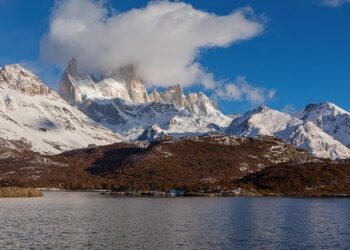
The integration of scientific cultures. The act of intersecting the three science cultures (Scientific Transculturalism) comes with the opportunity for positive and negative combinations. Credit: Proceedings of the National Academy of Sciences (2024). DOI: 10.1073/pnas.2209196121
Researchers who study Earth’s biosphere tend to operate from one of three scientific cultures, each with distinct ways of conducting science, and which have been operating mostly independently from one another, find the authors of a Perspective published in PNAS on April 19, 2024. SFI Professors Christopher Kempes and Geoffrey West, together with External Professor Brian Enquist (University of Arizona) identify and explain the three cultures, and suggest that reconnecting them could help accelerate biosphere science.
The first culture—variance—is what we all participate in when we take part in bird counts or collect bugs or wildflowers. It is naming and observing the details of biology. The second—exactitude—emphasizes models that use ever more data and ever-finer detail and resolution.
“Exactitude culture would be the perspective that the best model of the world is a world-sized model,” says Kempes. The third—coarse-grained culture—focuses on generalities, simplifications, and underlying principles. This approach tries to work out the big picture. These cultures exist across science but are currently relatively disconnected in the biosciences.
“Ultimately, good science needs and incorporates all of these cultures,” says West. “And good science—meaning a deep understanding that explains what we know and observe, provides new insights, and makes predictions that can be tested—underlies long-term solutions to big problems.
“It is critical for informing practitioners and policy-makers in addressing the huge problems of the 21st century. This has become a matter of great urgency for addressing the future of the planet and the sustainability of our entire socio-economic enterprise.”
But there is a lag in developing a predictive science of the biosphere. Critics suggest the cause could be a lack of data, an inadequate number of experiments, or the complex nature of the biosphere. “We suggest it’s more than that,” says Enquist. “In large part, the lag is due to unresolved tension between these three scientific cultures.”
And that tension limits how quickly science can progress, how deeply we can understand, and our ability to make predictions. “Synthetic, synergistic, and integrated science—science that can address increasingly more complex problems—occurs when all three cultures are merged,” he says.
The authors point to the theory of evolution as one example. Charles Darwin and Alfred Russel Wallace each started in variance culture but also thought in terms of general principles. They independently developed the (very coarse-grained) theory of evolution.
Later, this theory was combined with genetics to produce mathematical theories for population genetics, leading to the Modern Evolutionary Synthesis. That theory, in turn, has been elaborated with models and modern computing by exactitude culture.
Inevitably, tension arises when integrating cultures, but that can be a good thing for science—these tensions reveal assumptions, which leads to a transparent understanding of the key variables and mechanisms driving the system, says Enquist. Integration makes predictions more effective by continually challenging theory with data, and provides a mechanism of iteration. That, in turn, allows scientists to rapidly refine their assumptions and predictions, and guides new data collection.
To move towards integration, the authors suggest the biosphere science community engage more with historians of science, and increase outreach, workshops, undergraduate courses, awards, and funding on transculturalism in science. Finally, scientific journals need to promote papers that transcend not just disciplines, but cultures as well.
As the Modern Evolutionary Synthesis showed, biologists haven’t always been divided by culture and they needn’t be now. By breaking down artificial academic and intellectual barriers, biosphere scientists will open the door to rapid, revolutionary, and urgently needed scientific progress, says Kempes. “All it really takes is people taking interest in the other scientific cultures.”
More information:
Brian J. Enquist et al, Developing a predictive science of the biosphere requires the integration of scientific cultures, Proceedings of the National Academy of Sciences (2024). DOI: 10.1073/pnas.2209196121
Citation:
To accelerate biosphere science, researchers say reconnect three scientific cultures (2024, April 23)
retrieved 23 April 2024
from https://phys.org/news/2024-04-biosphere-science-reconnect-scientific-cultures.html
This document is subject to copyright. Apart from any fair dealing for the purpose of private study or research, no
part may be reproduced without the written permission. The content is provided for information purposes only.
>>> Read full article>>>
Copyright for syndicated content belongs to the linked Source : Phys.org – https://phys.org/news/2024-04-biosphere-science-reconnect-scientific-cultures.html































